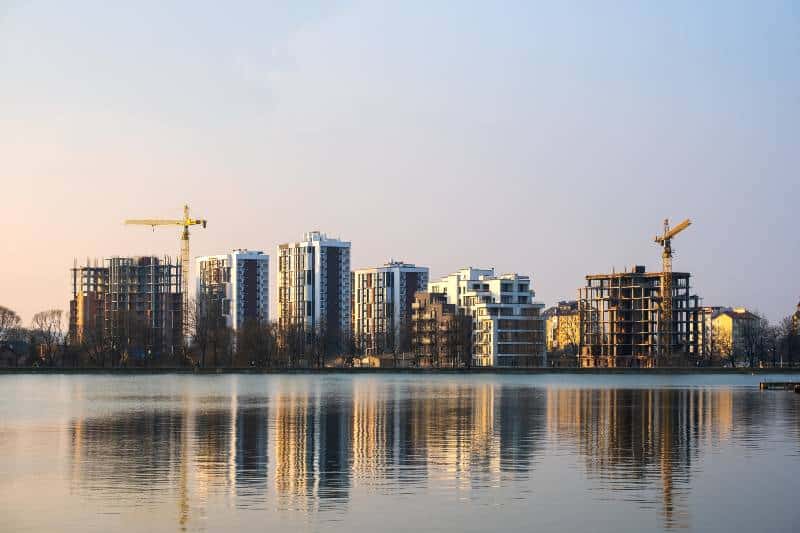The landscape of urban real estate is undergoing a significant shift as developers increasingly turn to converting aging office buildings into residential apartments. This trend, fueled by the rise of remote work and the consequent increase in office vacancy rates, is set to reach unprecedented heights in 2024. According to a recent report from CBRE, office-to-apartment conversions are expected to more than double this year compared to the previous year, with nearly 70 million square feet of office space (1.7% of the total US supply) undergoing conversion as of Q1 2024.
Table of Contents
The Driving Forces Behind Office-to-Apartment Conversions
Remote Work and Office Vacancy Rates
The primary catalyst for this surge in office-to-apartment conversions is the widespread adoption of remote work. As companies embrace flexible work arrangements, the demand for office space has decreased, leading to higher vacancy rates in commercial buildings across American cities. This shift has prompted developers to seek alternative uses for these underutilized spaces, with multifamily housing emerging as the most popular option.
The Housing Shortage and Demand for Residential Space
While the rise of remote work has reduced the need for office space, the demand for residential apartments remains strong. The United States is currently facing a housing shortage, and the conversion of office buildings into apartments offers a potential solution to this problem. According to RentCafe, more than 55,300 housing units are being created from office buildings in 2024, representing a fourfold increase since 2021.
The Challenges and Opportunities of Office-to-Apartment Conversions
High Construction Costs and Interest Rates
Despite the growing popularity of office-to-apartment conversions, developers face significant challenges in the form of high construction costs and interest rates. Conversion costs typically range between $250 and $650 per square foot, depending on the complexity of the project. Additionally, high-interest rates pose an additional hurdle, although CBRE anticipates that rates will start to decline later this year.
Government Support and Zoning Changes
To help mitigate these challenges and encourage office-to-apartment conversions, many state and local governments are considering subsidizing conversion projects and easing zoning restrictions to expedite the approvals process. These measures could provide a much-needed boost to the conversion trend and help address the housing shortage in urban areas.

The Impact on Urban Landscapes and Housing Supply
Transforming Urban Office Centers
As office-to-apartment conversions gain momentum, many urban office centers are gradually being transformed into more vibrant, commercially diverse districts. This transformation not only breathes new life into aging office buildings but also contributes to the creation of more livable and sustainable urban environments.
Addressing the Housing Shortage
While the additional housing supply generated by office-to-apartment conversions represents less than half a percent of the total U.S. apartment inventory, it is still a step in the right direction toward alleviating the broader U.S. housing shortage. Since 2016, CBRE reported that 133 office-to-multifamily conversions have created more than 22,000 apartments, with an estimated 31,000 more apartments expected to be produced over the next several years from the 169 underway or planned projects.
The Most Active Markets for Office-to-Apartment Conversions
Washington, D.C. Metropolitan Area
The Washington, D.C., metropolitan area is at the forefront of the office-to-apartment conversion trend in 2024. Plans are currently underway to convert office space into 5,820 apartment units, representing an impressive 88% increase from the previous year. This surge in conversion activity highlights the growing demand for residential space in the nation’s capital and its surrounding areas.
New York Metro Area
The New York metro area is not far behind, with 5,215 new apartments planned from former office spaces. A notable contributor to New York’s growth is the transformation of 25 Water Street in Manhattan, previously a JPMorgan & Chase Co. outpost, into 1,263 apartments. This project stands as the largest of its kind in the country, showcasing the immense potential of office-to-apartment conversions in densely populated urban centers.
Dallas: A Leader in Office-to-Apartment Conversions
Dallas ranks third in the nation for office-to-apartment conversions, with 3,163 housing units being created from former office spaces. Remarkably, these conversions account for 83% of all types of conversions in the city, the highest share among the top cities. This trend is likely driven by Dallas’ strong job growth, with the metropolitan area adding nearly 140,000 jobs in November 2023 alone, more than any other metropolitan area in the country.
Chicago’s Steady Conversion Activity
Despite a 9% decline from the previous year, Chicago ranks fourth in the nation for office-to-apartment conversions. The city’s largest project, located at 135 South LaSalle St., is expected to yield approximately 430 units, accounting for roughly a third of the city’s total conversions from former corporate buildings. While the pace of conversions may have slowed slightly, Chicago remains a significant player in the office-to-apartment conversion trend.
| Market | Percentage of Total Office Inventory Being Converted | Square Footage Being Converted (millions) |
|---|---|---|
| Cleveland | 11% | – |
| Houston | – | 6.2 |
CBRE notes that eight of the top 10 markets for conversion activity had an office vacancy rate above the 18.6% US average as of Q4 2023. Cleveland has the highest percentage of total office inventory being converted at 11%, while Houston leads in terms of square footage being converted at 6.2 million.
Conclusion
The surge in office-to-apartment conversions is a testament to the resilience and adaptability of the real estate industry in the face of changing market conditions. As remote work continues to reshape the demand for office space, developers are seizing the opportunity to repurpose aging office buildings into much-needed residential apartments. While challenges such as high construction costs and interest rates persist, the support of state and local governments, coupled with the growing demand for housing, is expected to drive this trend forward in the coming years.
As a seasoned professional in the commercial real estate industry, Mike Tolj is well-positioned to help business owners and landlords navigate this evolving landscape. With over 18 years of experience and deep specialization in representing clients for both leasing and sale of commercial properties, Mike is renowned for his swift and efficient approach to deal-making.
His commitment to helping his clients fulfill their real estate ambitions, combined with his impressive track record of successful transactions, makes him an invaluable resource for those looking to capitalize on the opportunities presented by office-to-apartment conversions. To learn more about how Mike can assist you in achieving your commercial real estate goals, please don’t hesitate to schedule a consultation with him today.




